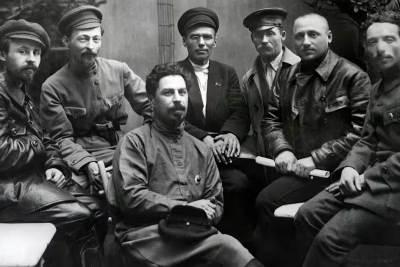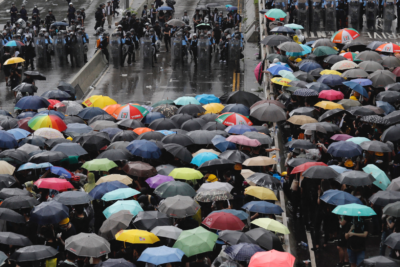
Belarusian Partisans in 2025: Digital Resistance Against Lukashenko's Regime

In Belarusian history, the term "partisans" evokes powerful imagery: fighters hiding in dense forests during World War II, ambushing Nazi troops, and becoming national heroes. Today, Belarusian Partisans in 2025, keep the spirit of these resistance fighters lives on — but instead of rifles and sabotage in the woods, modern Belarusian partisans wield laptops, encryption tools, and digital networks to battle authoritarianism.
This new generation of "digital partisans," led by groups like the Cyber Partisans, has transformed resistance into a high-tech fight against Lukashenko’s regime. Their tools are no longer explosives and espionage, but cyberattacks, leaks, and digital sabotage aimed at dismantling state control and exposing the truth.
🌲 From WWII Partisans to Digital Rebels
The original Belarusian partisans emerged during the German occupation in WWII, conducting guerrilla warfare from the forests and swamps of Belarus. Their courage earned them a permanent place in Belarusian collective memory and folklore. Streets, monuments, and even state propaganda have long celebrated their heroism as a cornerstone of national identity.
However, in 2025, the term has taken on a new meaning, representing those who fight not with guns but with data and information. While Lukashenko’s government still uses partisan imagery in state propaganda, modern activists reclaim the word to connect past resistance with present struggles.
This reinterpretation signals a generational shift: the battlefront has moved from rural battlegrounds to the virtual arena, where information itself is weaponized against oppression.
💻 The Rise of the Cyber Partisans
The Cyber Partisans, a clandestine hacktivist group formed after the disputed 2020 presidential elections, are at the forefront of this digital battle. Their actions include:
- Hacking state databases: In 2021, they infiltrated police and KGB servers, leaking files that exposed internal surveillance orders and identified officers involved in crackdowns.
- Railway sabotage (2022): They disrupted railway networks used by Russian forces to move military equipment through Belarus during the Ukraine invasion, slowing deployments and gaining international attention.
- Exposing propaganda: By leaking internal communications from state-run TV, they revealed scripts used to manipulate public opinion.
By 2025, these tactics have matured into a coordinated network of digital activists, many operating from exile in Lithuania, Poland, and other EU countries. Their leaks and cyberattacks regularly dominate independent media coverage and undermine the state narrative inside Belarus.
🔧 Tactics of Digital Resistance in 2025
Modern Belarusian partisans combine hacktivism, digital leaks, and information warfare to weaken Lukashenko’s control:
- Data breaches: Publishing the names and personal data of KGB officers, judges, and prosecutors involved in political persecution.
- Infrastructure sabotage: Disrupting telecommunications and transportation systems controlled by the state.
- Secure platforms: Developing encrypted tools to connect dissidents within Belarus to the diaspora and journalists abroad.
- Independent news support: Supplying banned outlets like Belsat, Nexta, and Euroradio with insider documents and evidence of human rights abuses.
These operations are not merely symbolic gestures. They complicate the regime’s daily operations, expose abuses internationally, and embolden citizens who see proof that the state is not invincible.
🚨 Lukashenko’s Crackdown on Digital Rebels
Unsurprisingly, Lukashenko has branded these digital activists as "terrorists". The Belarus KGB, still operating under its Soviet-era name, aggressively targets suspected hackers and anyone linked to “extremist groups.”
New legislation introduced in late 2024 criminalizes:
- Following "extremist channels" on Telegram.
- Providing donations to dissident organizations, even indirectly.
- Using VPNs or circumvention tools to bypass censorship.
Despite these measures, the decentralized nature of cyber resistance makes it nearly impossible to eradicate. Cyber Partisans leadership has relocated abroad, operating safely from jurisdictions outside Belarus, while sympathizers inside the country continue providing intel and access.
🔗 Related: Belarus KGB in 2025: How the Security Service Enforces Lukashenko’s Grip on Power
🌍 Why Digital Partisans Matter
The importance of Belarusian partisans in 2025 goes far beyond hacking state systems. They play a crucial role in breaking censorship, exposing corruption, and maintaining international attention on Belarus.
- Breaking the information blockade: With state media under strict control, leaks from Cyber Partisans provide uncensored information to Belarusians and international observers alike.
- Documenting abuses: Every hack and data dump adds to a growing archive of evidence that may one day be used in international courts.
- Fueling international pressure: Their evidence bolsters sanctions, UN reports, and NGO campaigns against the regime.
- Keeping hope alive: For ordinary Belarusians facing repression, seeing that Lukashenko’s apparatus can be challenged—even digitally—offers inspiration.
In many ways, the Cyber Partisans inherit the legacy of WWII partisans: unconventional fighters exploiting asymmetrical tactics to challenge a vastly more powerful adversary.
🔮 The Future of Digital Resistance
Experts believe that digital partisanship will only expand, especially as younger Belarusians grow up fluent in technology and disillusioned by state propaganda. Future resistance could include:
- Blockchain-based funding channels to bypass regime banking controls.
- Advanced cyber operations targeting propaganda infrastructure.
- AI-driven counter-surveillance tools to evade KGB monitoring.
This evolution suggests that Lukashenko’s regime, while still entrenched, faces a new front of opposition it cannot easily suppress with riot police or prisons.
❓ FAQs: Belarusian Partisans in 2025
Q1: Who were the original Belarusian partisans?
They were WWII guerrilla fighters resisting Nazi occupation, celebrated as national heroes in Belarusian history.
Q2: What are the Cyber Partisans?
A hacktivist group that emerged after the 2020 elections, targeting Lukashenko’s regime through cyberattacks, leaks, and digital sabotage.
Q3: How do Belarusian partisans resist today?
Through hacking government databases, sabotaging infrastructure, supporting independent media, and exposing repression.
Q4: How has the regime responded to digital resistance?
By enacting draconian cybercrime laws, expanding KGB surveillance, and branding activists as "terrorists."
Q5: Why are Belarusian partisans significant in 2025?
They challenge the regime’s control, keep Belarus in global headlines, and document abuses that may one day fuel justice.





